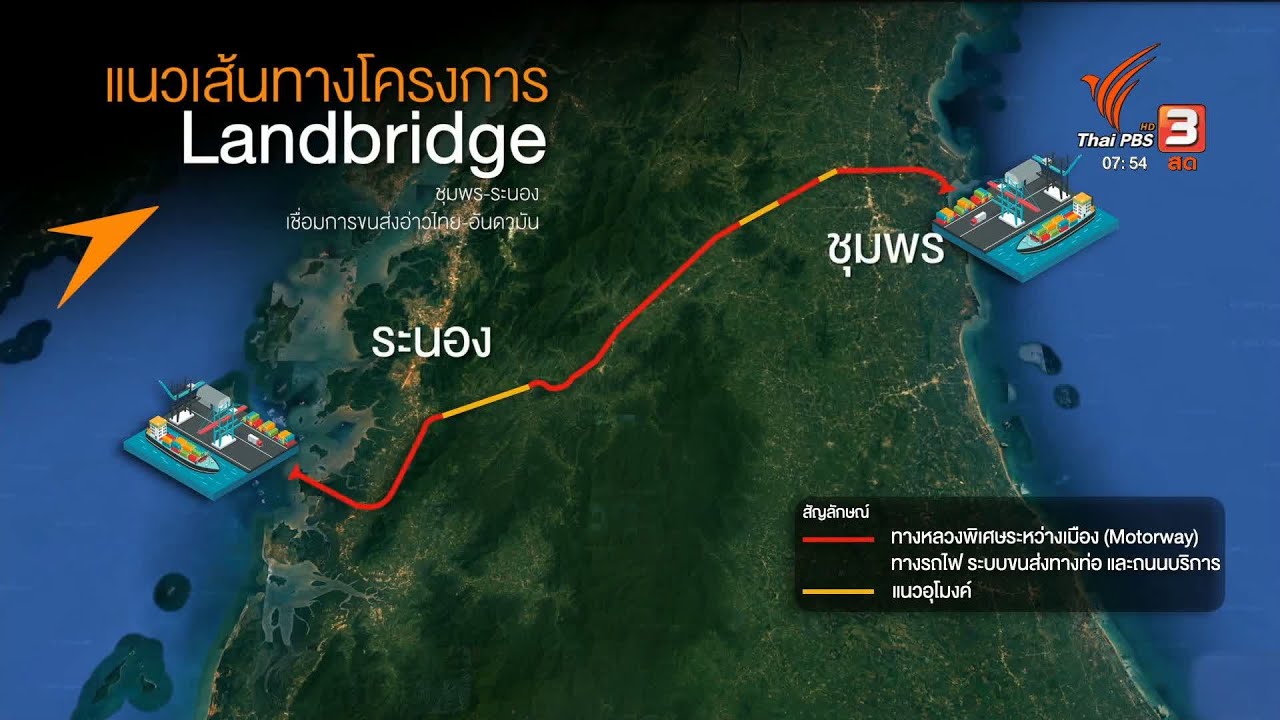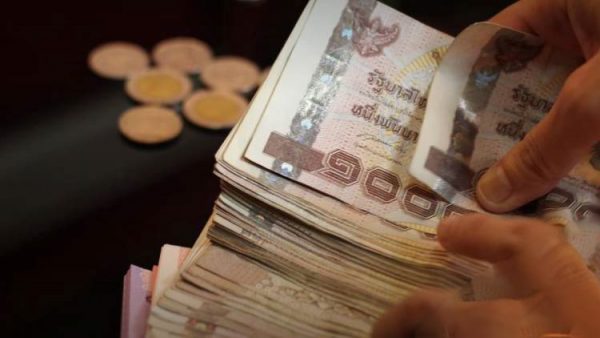Questions remain over viability of multi-billion-dollar land bridge project

The idea of a land bridge connecting the Gulf of Thailand and the Andaman Sea has been in the pipeline for a few years. Former transport minister Saksayam Chidchob had pushed for the multi-billion-dollar project when serving in the Prayut Chan-o-cha government. The current Cabinet of Srettha Thavisin has given it added impetus, approving the project in principle in October.
The project is currently undergoing feasibility studies, environmental and health impact assessments even as Srettha is already selling the project abroad to woo foreign investors.
An ambitious project
The land bridge proposal is effectively a land transport route that will connect the sea transport routes on the Gulf of Thailand and the Andaman Sea.
It would comprise a six-lane motorway 90 kilometers long, a double-track railway, pipelines for transporting oil and natural gas. It would include two deep-sea ports, each capable of handling 20 million cargo containers (twenty-foot equivalent unit: TEUs) — one port would be in Ranong province on the Andaman Sea coast and the other in Chumphon province on the coast of the Gulf of Thailand.
International bidding is expected to be held next year and the bridge could open for services in 2030, according to the Transport Ministry’s Office of Transport and Traffic Policy and Planning (OTP).
The investment of about 1 trillion baht (US$28 billion) would cut ships’ travel time by four days, reduce operational costs by 6 per cent and reduce ship traffic congestion in the busy Strait of Malacca, according to Thai officials.
Punya Chupanit, director-general of OTP, explained that the project was not being designed to compete with ports in Singapore and Malaysia but to solve the congestion in the Strait of Malacca and to serve as an international trade gateway. He expected the land bridge to draw about 15 per cent of traffic from ports in Singapore and Malaysia.
The focus on the project did not happen overnight, he said, adding that there had been discussions for long about shortening the maritime transportation distance around the Strait of Malacca. He cited the previous idea of digging the Kra Canal.
Imprudent investment?
Assoc Prof Dr Sompong Sirisoponsilp at the Logistics and Supply Chain Management Program of Chulalongkorn University doubts the key assumptions about time and cost savings. Sompong is the team leader studying the development of transport routes linking the Gulf and the sea and other options.
He presented the results of the feasibility study on connecting transport routes in the Gulf of Thailand and the Andaman Sea at a public round table in December last year. The study was sponsored by Chulalongkorn University and the Office of the National Economic and Social Development Council (NESDB), which compared four development approaches.
1. Development of production and trade areas along the Gulf of Thailand coast and Andaman Sea under the plan for sustainable development of the Southern Economic Corridor (SEC) without new construction of transportation links between the two coasts.
2. Development of a new land economic bridge, or a so-called Land Bridge Chumphon-Ranong project.
3. Kra canal project, digging an artificial waterway.
4. Development of a land economic bridge along the Greater Mekong Subregion SEC — a road route linking transportation between Kanchanaburi province and the Myanmar border going through the Andaman Sea’s Dawei Port.Key conclusions
The study found that the first option would be the best while option No. 2, or the land bridge project, was ranked third with a score of 19.3%. When evaluating the demand for goods from the shipping patterns in the Strait of Malacca, it was found that the target group that may use the land bridge would be mainly container ships.
In this regard, there are suggestions that development of infrastructure to support foreign goods that will be transshipped via the land bridge “was not worth investing in, both economically and financially”.
The business model should be adjusted by reducing the size of the project to only one goal: support Thai production and trade under the development of the SEC. This will reduce the size of the infrastructure project and minimize potential risks to the environment and local community.
“The optimum size of the project might be about 10-20 per cent of the size of the land bridge project being proposed by the Transport Ministry’s OTP,” Sompong said recently in an interview to Channel 3 news. A larger project potentially would have a bigger impact on local communities, as the government would need to expropriate their lands, he said.
He also doubted the OTP claim of traffic congestion on the Strait of Malacca. Singapore has already expanded its port to brace for increasing traffic, he said.
View of the maritime industry
Piset Rittapirom, chairman of the Bangkok Shipowners and Agents Association, said that most of the container ships used on the project’s target routes were between 7,500 to 25,000 TEU and 300-400 meters in length. There is only one transport route.
If the destination is India-Middle East-Europe, only large ships may use the land bridge service. However, use of the bridge by large ships will involve additional costs, time, and the use of more ships. This will directly affect the cost of transporting goods, Piset argued.
NGO and academics worried
Somnuck Jongmeewasin, research director at the community-based EEC (Eastern Economic Corridor) Watch, is worried about pollution and industrial accidents as had often happened at the Map Ta Phut Industrial Estate and Laem Chabang port on the eastern coast of Thailand.
Asst Prof Dr Pornpimol Pimolrat, a lecturer at Maejo University in Chumphon, is worried that the welfare of people in Chumphon province could be impacted by polluted sea water, declining fish stocks and accidents involving oil leaks, which could make sea foods from the southern province unsafe.
Prof Dr Praipol Koomsup, the former dean of Thammasat University’s Faculty of Economics, said that the study by the Chulalongkorn team was more credible and professional compared to that of the OTP. He said the state agency had over-estimated the benefits and made weak assumptions. The public does not buy the OTP proposal, he said.
Praipol rebuffed PM Srettha’s claims that the land bridge would shorten travel distance for ships, reduce cost and ensure safety.
He said he could not understand why Srettha had not studied the project details thoroughly before embarking on several road shows, pitching the project to international leaders.
By Thai PBS World’s Business Desk






